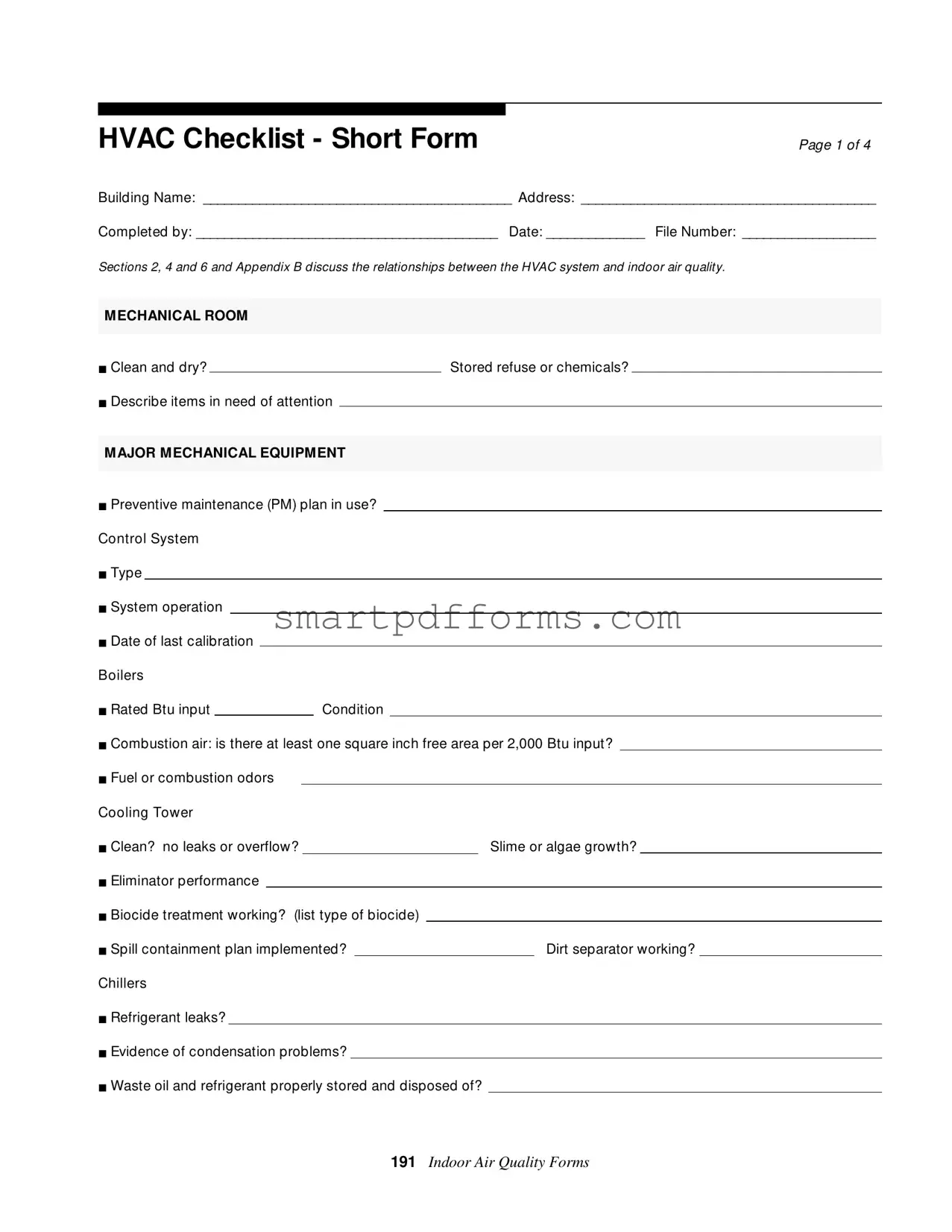What is the purpose of an HVAC Inspection Checklist?
The purpose of an HVAC Inspection Checklist is to ensure the heating, ventilation, and air conditioning (HVAC) system in a building is clean, properly maintained, and functioning efficiently. It helps identify areas that need attention or repair, thereby improving indoor air quality and reducing energy costs. By following a structured assessment, such as checking for cleanliness in the mechanical room, the operational status of major mechanical equipment, and the condition of air handling units, a comprehensive evaluation of the system’s health is achieved.
Who should complete the HVAC Inspection Checklist?
The HVAC Inspection Checklist should be completed by a trained and qualified individual. This could be an experienced HVAC technician, a building maintenance professional, or a facility manager who has an understanding of HVAC systems and indoor air quality standards. Given the technical nature of the checklist, including assessments of combustion air requirements, preventive maintenance plans, and biocide treatments, it's crucial that the person conducting the inspection has the expertise to accurately evaluate and interpret the system's condition.
How often should the HVAC Inspection Checklist be used?
The frequency at which the HVAC Inspection Checklist should be used can vary based on several factors, including the age of the system, its usage intensity, and specific local regulations. However, as a general guideline, it is advisable to complete a thorough inspection at least once a year. More frequent checks might be necessary for older systems or in environments with higher levels of dust, chemicals, or other contaminants that could impact indoor air quality and system performance.
What are some key items included in the checklist?
Key items included in the checklist cover a broad range of components and considerations essential for HVAC system evaluation. These include:
- The condition and cleanliness of the mechanical room.
- Preventive maintenance plans for major mechanical equipment.
- Control system calibration and operation.
- Outdoor air intake and the presence of potential contaminant sources.
- Efficiency and condition of boilers, chillers, and cooling towers.
- Proper functionality of the air handling unit, including filters, dampers, and fans.
- Assessment of the distribution system for clean ducts and unobstructed air paths.
- Lastly, evaluation of occupied spaces for thermal comfort and control equipment functionality.
What happens if a problem is identified using the checklist?
If a problem is identified using the checklist, the next steps include assessing the severity of the issue, determining the best course of action for correction, and scheduling necessary repairs or adjustments. Minor issues might be resolved through immediate cleaning or adjustments during the inspection. More significant problems, however, may require professional service or parts replacement. Documenting these findings is crucial for maintaining a record of the system’s condition and to ensure all identified issues are addressed promptly.
Can the HVAC Inspection Checklist help improve energy efficiency?
Yes, the HVAC Inspection Checklist can significantly help improve energy efficiency. By identifying issues such as refrigerant leaks, improper damper settings, and other inefficiencies within the system, corrective actions can be taken to ensure the HVAC system runs more efficiently. Not only does this reduce energy consumption, but it also contributes to cost savings on utility bills and extends the life of the equipment by preventing overuse and premature failure.
Where can one find an HVAC Inspection Checklist?
An HVAC Inspection Checklist can typically be found through professional HVAC service providers, building maintenance organizations, or online resources that specialize in facility management and maintenance. Some manufacturers of HVAC equipment might also provide checklists tailored to their systems. Additionally, professional associations involved in heating, ventilation, and air conditioning may offer standardized checklists or guidelines for conducting thorough inspections and maintenance activities.




